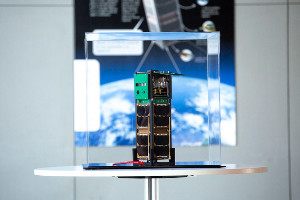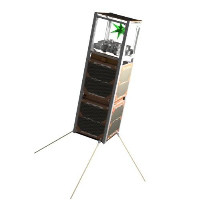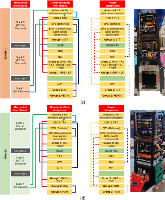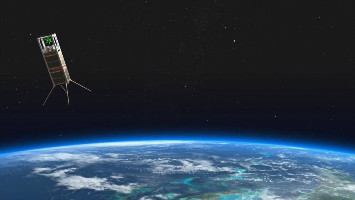| Spacecraft | PlantSat |
|---|---|
| Form factor | CubeSat |
| Units or mass | 3U |
| Status | Reentry 2024-03-04. Was operational (Last SATNOGS report with data from 2022-11-26 last checked on 2022-12-21. SmallSat 2023 presentation.) |
| Launched | 2022-04-01 |
| NORAD ID | 52188 |
| Deployer | ? |
| Launcher | Falcon 9 (Transporter-4) |
| Deployment | Deployed from D-Orbit ION on 2022-04-12 |
| Entity name | University of Chile |
| Institution | University |
| Entity type | Academic / Education |
| Nation | Chile |
| Oneliner |
Growing a plant in space simulating Mars conditions. Biological payloads, as well as other experiments with graphene-based devices |
| Description |
Monitor the behavior of a plant in a microgravity environment and in extreme conditions of solar radiation. PlantSat is a contribution to the ongoing human efforts of exploring, understanding and eventually colonizing Mars. Its goal is to study in low earth orbit the growth of a suitable plant, replicating the conditions that life will experience on Mars’ surface. These conditions include low gravity force and high solar radiation. The proposed plant genus for PlantSat is Tillandsia. This is a hardy genus that can be found all across the neotropics, high up in the mountains of the Andes and down to the shores of the Atacama desert. This hardiness and versatility makes it an excellent candidate for survival in harsh environments. The satellite will be a 3 units CubeSat with a GomSpace type BUS using a SUCHAI configuration and Flight Software. One of its units will be specially adapted to host a biosphere payload which is under development. |
| Sources | [1] [2] [3] |
| Photo sources | [1] [2] [3] |
| COTS subsystems |
|
| Subsystems sources | [1] [2] |
| On the same launch |
|
Last modified: 2024-05-26




